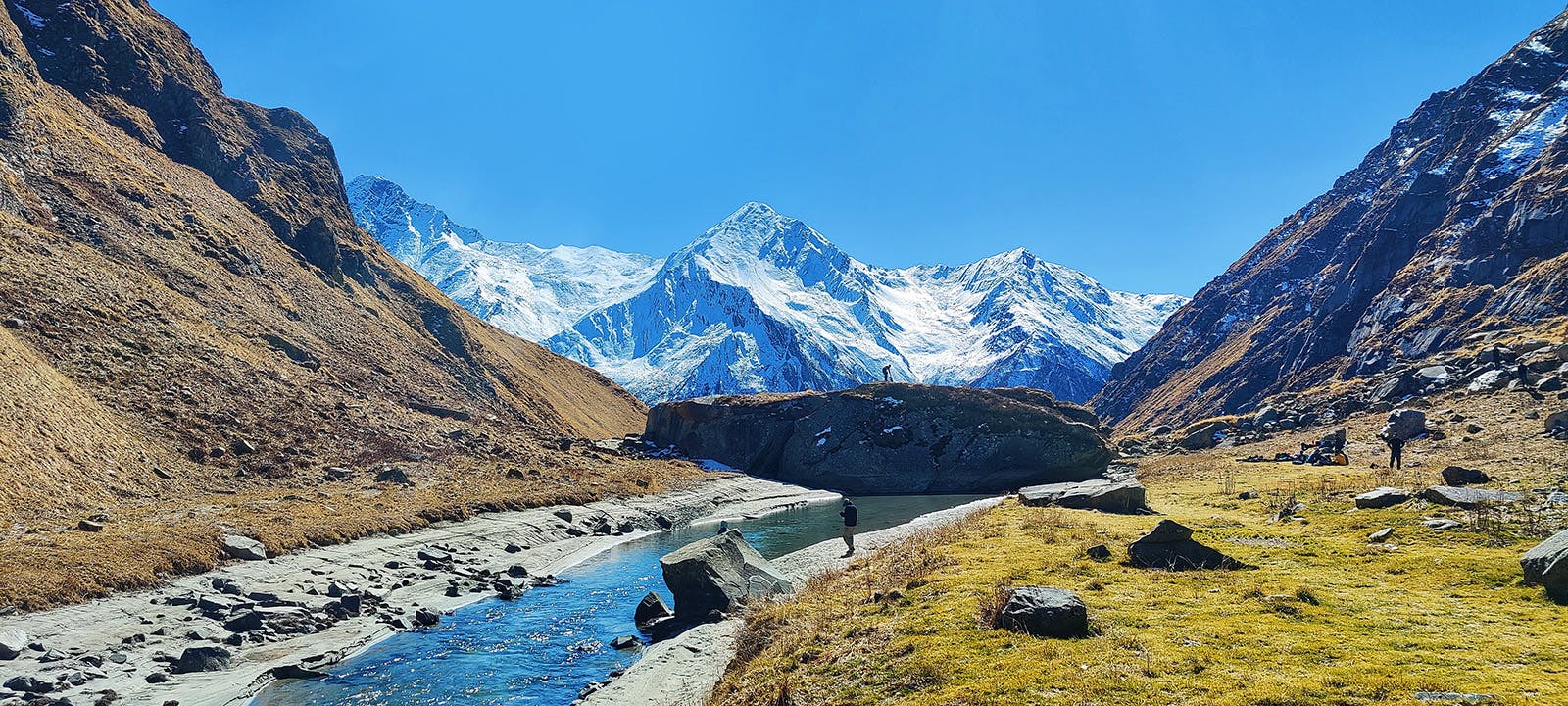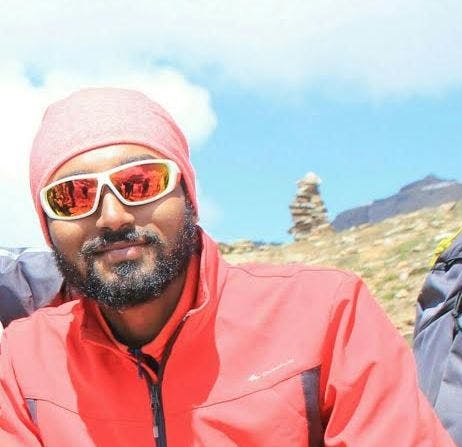The Har Ki Dun Trek - Autumn Vs Winter
Share this story
The Har Ki Dun Trek - Autumn Vs Winter
Category Season Wise Guides Guides To Choose Treks
By Abhirup Paul
2016-10-18
In the cold winter months of December, March and April, the Har Ki Dun valley is shrouded in snow. Lush meadows change complexion and transform into snow blankets. But the valley tells a different story in autumn. The resigned sleepy villages come bustling back to life. The valley is teeming with crops and wild flower beds. In a nutshell, Har Ki Dun is one of those rare treks that perfectly captures the ‘circle of life’.
It was March 2016. It was my first time assisting a batch of trekkers to Har Ki Dun. A light snowfall had already started midway on Day 3 as we approached the final campsite. The jubilation of my trekkers on seeing the first snowfall was such a happy sight to witness. They were so excited about what’s in store. I was excited too as it was my first time here.
Experiencing a snowfall is as close to magic as you get! Picture by Anirban Banerjee
We started gaining altitude gradually. After crossing a small wooden bridge over a rapidly flowing stream, I stopped. The white downpour continued as I turned around for a brief glance at the valley behind. The incredible sight instantaneously compelled me to stop and stare!
I had no idea that the best was yet to come when I reach the final campsite of Har Ki Dun. The entire landscape was engulfed in snow. I was sold.
The Har Ki Dun Valley under a blanket of snow
The colours of autumn at Har Ki Dun
The next time I went to Har Ki Dun was in September that year. I remember being excited about seeing the trek in another season. I had only experienced a monochromatic valley so far.
And boy oh boy! I was in for a surprise.
The autumn season is when the valley is at its pleasant best. The season is perfect to absorb all the breathtaking views minus the harshness of the winter cold. The red chaulai crop is cultivated all along the valley and coupled with the snow-capped peaks; they make for an amazing contrast to the greenery all around.
The red chaulai crop that grows in this region is a treat to the eyes. Picture by Vijay Kapse
The rawness of nature
Almost until the end of April, Har Ki Dun is covered in white. You don’t really see nature in its raw form. So I was surprised when I saw the landscape stripped off of its fluffy blanket. The Supin river snaked its way through the valley like it had done in winter, but the water was clearer and bluer.
The alpine setting of the Har Ki Dun trek is at its best in autumn. Picture by Vishal Negi
The best dusk and dawn in autumn
Thanks to the clear skies and the lack of haze, I saw the best play of light on the landscape. While our mules calmly nibbled on grass, the pine trees took on the golden hue of the sun. The entire campsite was bathed in orange light.
Dusk at the Har Ki Dun valley. Picture by Vishal Negi
To add to that, the view of the faraway summits in such clear air felt like a privilege. This rarely happens in winter.
Alpenglow as seen from the Har Ki Dun trek. Picture by Vishal Negi
Isolation in the valley
Another thing I noticed is that trekkers swarm to Har Ki Dun in winter. Most trekkers know of its fairytale-like quality in winter. Few appreciate the colours of autumn, which is a pity. When you trek here in autumn, you rarely come across people. It’s you, your trek mates and the few local folk you meet at the ancient villages. It’s a welcome change!
Autumn is when you see fewer people and clearers views. Picture by Vishal Negi
Winter for those who want to experience snow and extreme temperatures
And then, there is the winter season when the Har Ki Dun valley drapes a white blanket. The harsh cold settings of winter may be presumed to be a hindrance to a trekker’s enjoyment of all the scenes and sights, but trust me every view here will gift a fresh new lease of life to the admirer.
The Har Ki Dun trail after a fresh bout of snowfall.
The fatigue from the walk and the chilly fight with the belligerent cold will vanish in split seconds as you stand in awe of the scenery in front. I know this because I have been through this.
When I reached the final campsite of Har Ki Dun with the team on Day 3, the light snowfall continued. As we started pitching the tents for the trekkers, it started snowing heavily and everything was white in a jiffy. It was cold, too windy, visibility hit a new low and I was shivering.
My hands were rendered partially useless as they became numb. But I had to pitch tents soon otherwise my trekkers would have a tough time in the dining tent. It’s not easy in such extreme cold when you have to hold your poncho with one hand, push a tent peg through the tent hook with the other and both your hands are partially paralysed. It’s not as comical as it sounds either.
Campsite Shrouded in Snow – PC – Siddharth Sirohi
But what an experience it was! One that will remain etched in my mind forever. All this struggle and difficulty didn’t matter to me at all as I was in a different world altogether-the Har Ki Dun campsite seemed like a slice of heaven brought to earth.
Har Ki Dun was one of my first treks with Indiahikes. Now quite a few treks later, I can confidently say that Har Ki Dun is perhaps the prettiest place to camp in the Himalayas. You camp on a flat patch of grassy land just beside the lazily flowing crystal-clear waters of the Maninda stream.
The campsite with the Har Ki Dun peak behind
It’s hard for me to pick between winter at autumn – it’s a cruel question to ask. But I can tell you this much – if you want to trek in snow, then winter is your chance – all the way till April. But if you are one for a comfortable trek, the views, the isolation and the colours of nature, then go in autumn.
Sign up for our much loved Weekly Mailer
We have terrific trekking tips, trek updates and trek talks to look forward to

